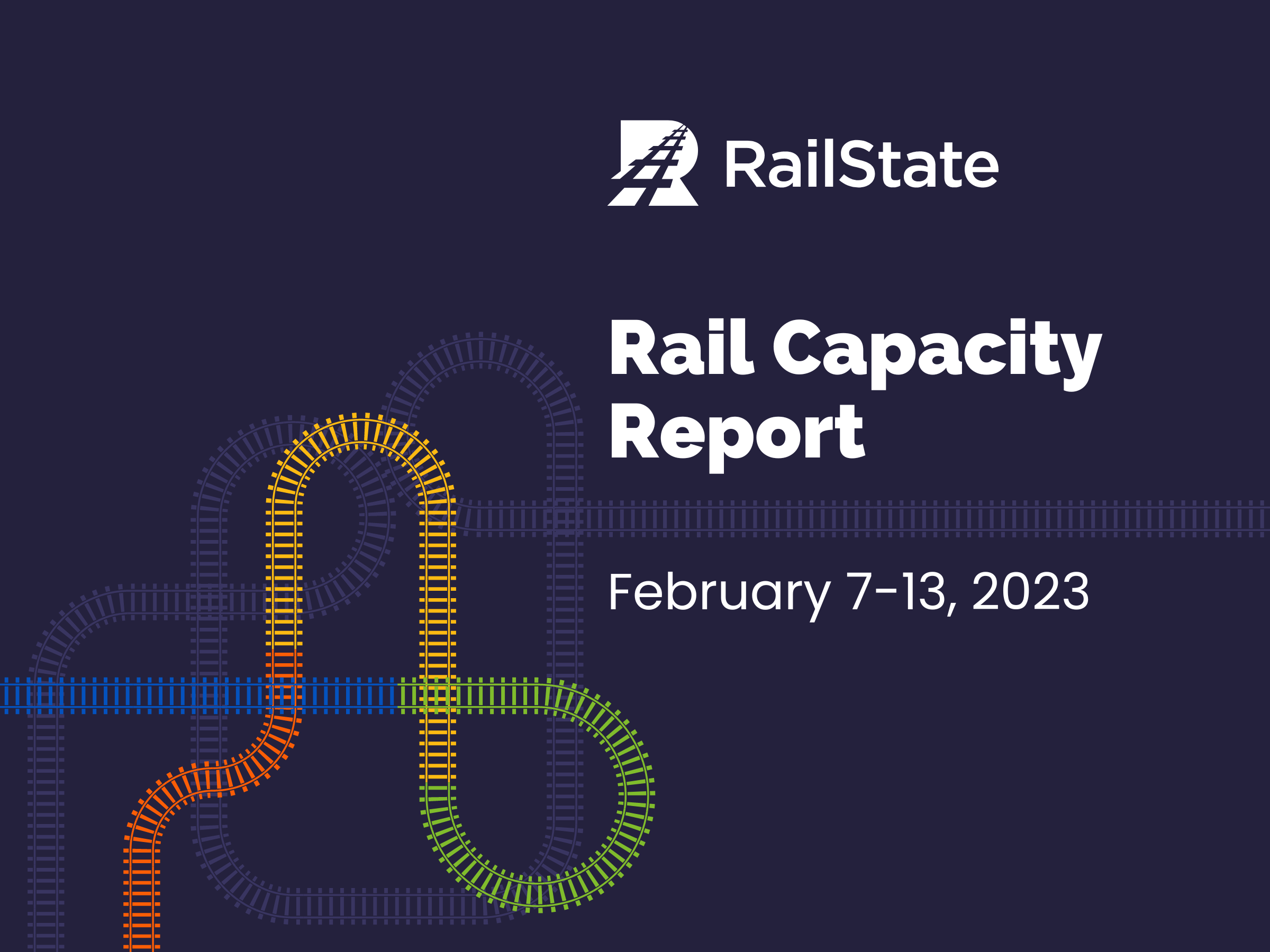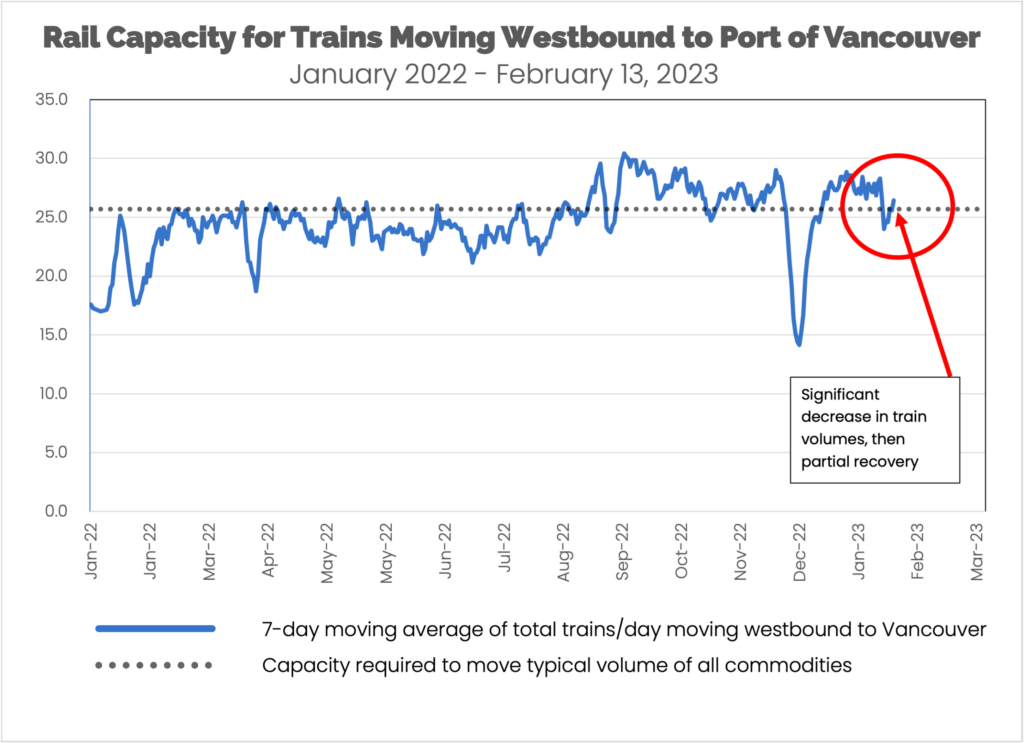
We’ve been reporting on rail capacity westbound into the Port of Vancouver for the last five months.
Note – Now that the period of peak demand for grain during the 2022-2023 grain season has ended, we are re-focusing this report more generally on rail capacity, but we will continue to report similar data. However, we are now using calendar year 2022 as our historical comparison period, rather than the 2021-2022 grain season (8/1/2021-7/31/2022).
For most of the past five months, the railways have appeared to be doing well with westbound movements toward Vancouver. During the week ended 2/6, the railways’ relatively strong performance continued, with westbound movements toward Vancouver averaging 28.3 trains/day.
During the week ended 2/13, there was a significant disruption of the westbound train traffic on 2/7 and 2/8, followed by a partial recovery. Due to some emergency track maintenance requirements, the number of trains/day westbound toward Vancouver fell to 18 trains/day on 2/7 and 9 trains/day on 2/8. (Although a total of 15 trains passed RailState’s sensor at Chilliwack, BC on 2/8, 6 of these were maintenance-of-way trains that deployed MOW equipment in the vicinity of the Chilliwack sensor, and therefore they were not through traffic.)
During these two days of disrupted traffic flow, a total of 29 trains worth of volume was delayed (or slightly more than one full day’s worth of traffic, at the pre-disruption average flow rate of 28 trains/day.) Due to a very good performance from 2/9 through 2/13 (averaging 31.2 trains/day) the overall average for the week ending 2/13 was 26.4 trains/day, slightly above the average of 25.7 trains/day that is required to move the typical volume of all commodities. However, rail capacity westbound toward Vancouver was at or below this required average for five out of seven days during the week ending 2/13. And recoveries after a disruption don’t always occur that quickly (or at all: since the rail system operates so close to its maximum capacity, volumes lost to a disruption are often permanently lost.)

Observations for Week (2/7/2023-2/13/2023):
- The 7-day moving average number of trains moving westbound past Chilliwack was 26.4 trains/day, slightly above the average of 25.7 trains/day that is required to move the typical volume of all commodities.
- The moving average number of trains/day was at or below 25.7 trains/day for 5 of the 7 days during this past week.
- During the week ended 2/13/2023, the 7 day moving average for total trains decreased by 1.9 trains/day, falling from 28.3 trains/day as of 2/6 to 26.4 trains/day as of 1/30.
As of 2/13/2023, rail traffic in four of the seven categories we track was below its long-term average level. Manifest trains (3.4 trains/day), intermodal (6.6 trains/day), coal (4.1 trains/day), and potash (1.0 trains/day), were all below their 2022 average levels, with the intermodal traffic remaining below its long-term average for the fourteenth week in a row. Only grain traffic (6.9 trains/day), petroleum (3.0 trains/day), and other traffic (1.4 trains/day) were above their 2022 average levels.
We will continue to monitor the corridor into Vancouver and provide updates on trends we’re seeing.
Subscribe to our blog for updates every week.
Categories
- AI (16)
- BNSF (19)
- Canadian National (32)
- CPKC (30)
- Freight Rail (165)
- Intermodal (1)
- Logistics (128)
- RailState (165)
- Technology (16)
- Uncategorized (3)
- Union Pacific (15)
Copyright © 2025
RailState LLC


